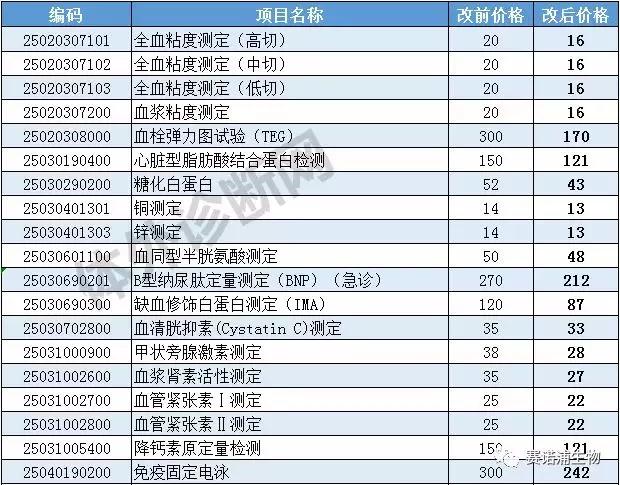Recently, the Hangzhou Municipal Medical Insurance Bureau and the Municipal Health and Health Committee issued the “Hangzhou Medical Service Price Reform Plan”, which was officially implemented on August 1. The price of medical services in 55 medical institutions in Hangzhou has been adjusted. So what impact will this price reform have on the people, patients and our IVD industry? The following small series will give you a brief analysis!

What are the reform contents?
1. Municipal public hospitals and related hospitals that voluntarily participate in the comprehensive reform of public hospitals
There were 11 categories and 940 adjustment projects, 879 price improvement projects and 59 price reduction projects; 938 of them were consistent with the project adjustments of the provincial bureau plan, and 2 new projects featured in Hangzhou municipal public hospitals were added.
At the same time, the policy of adding medical supplies with separate charges can be cancelled, and zero-rate sales can be implemented.
Second, Xiaoshan, Yuhang, Fuyang related hospitals
Yuhang Xiaoshan has a total of 2,797 adjustment projects, including 2,191 price improvement projects and 606 price reduction projects. A total of 3,171 Fuyang adjustment projects, including 2,665 price increase projects and 506 price reduction projects. The adjusted price is consistent with the same level of Hangzhou municipal public hospitals.
At the same time, the policy of adding medical supplies with separate charges can be cancelled, and zero-rate sales can be implemented.
Relevant hospitals that voluntarily participate in the comprehensive reform of public hospitals, and the management of medicines and medical consumables are implemented in accordance with the relevant policies of public hospitals.
Why should we carry out this medical service price reform?
For a long time, due to the fact that the history and medical security system are still being built gradually, the price of medical services that reflect the medical and technical value of medical personnel in public medical institutions is relatively low.
Take 13 provincial hospitals in Hangzhou as an example. In 2018, the income consisted mainly of 29% of medical services, 36% of drugs, 17% of consumables, and 18% of inspections. The total income accounted for 70% of the income, which truly reflected the value of medical staff. Medical services with expert technical value account for only 30%.
This not only causes waste of medicines and consumables, but also adversely affects the health of ordinary people. At the same time, doctors have long training cycles, technical difficulties, high occupational risks, and low medical service prices are not conducive to attracting excellent talents.
It is in this context that after the establishment of the Provincial Medical Insurance Bureau, the medical service price reform was listed as one of the “three major reforms” tasks this year. On the basis of in-depth research and full consultation, the Provincial Health and Health Commission initiated the province. The price reform of medical services in public hospitals.
Will this reform put a burden on the people and patients?
As this reform principle is grasped according to “capacity control and structural adjustment”, the total increase in medical service project price increase is less than the total amount of drugs, consumables, inspection, inspection and consumption reduction, and cancellation of medical consumables, so it is generally Does not increase the burden on the patient.
Moreover, 90% of the price adjustment project is a medical insurance payment project, and the patient has a small personal commitment. In the long run, by gradually standardizing the diagnosis and treatment behavior of medical institutions, reducing the unreasonable use of drugs, consumables, etc., controlling the unreasonable inspection and inspection costs, not taking the medicines that are not eaten, not doing the inspections, and ultimately the patients still benefit of.
From the impact on the medical insurance fund, the same principle is that the price adjustment principle of this price reform is grasped according to “capacity control and structural adjustment”, and the amount of space promised by the hospital is 1.1 times that of the increase in price, medicines, consumables, inspection and inspection. Most of them are also covered by medical insurance. Therefore, as long as the hospital completes the amount of space, it does not increase the expenditure of the medical insurance fund as a whole.
Partial inspection project price comparison before and after the reform


The reform price reduction project 59, of which the inspection project became the hardest hit. The above table is a comparison of the prices before and after the reform of some of the test items compiled by Xiaobian. The most common difference between the two is the detection of T cells by tuberculosis infection, which is 223 yuan. The HPV test was reduced from the original 200 yuan to 167. It can be said that this price cut will be a challenge for IVD companies. I don't know if there is a series of reforms and price cuts. Can IVD companies still face calmly and have any good solutions?